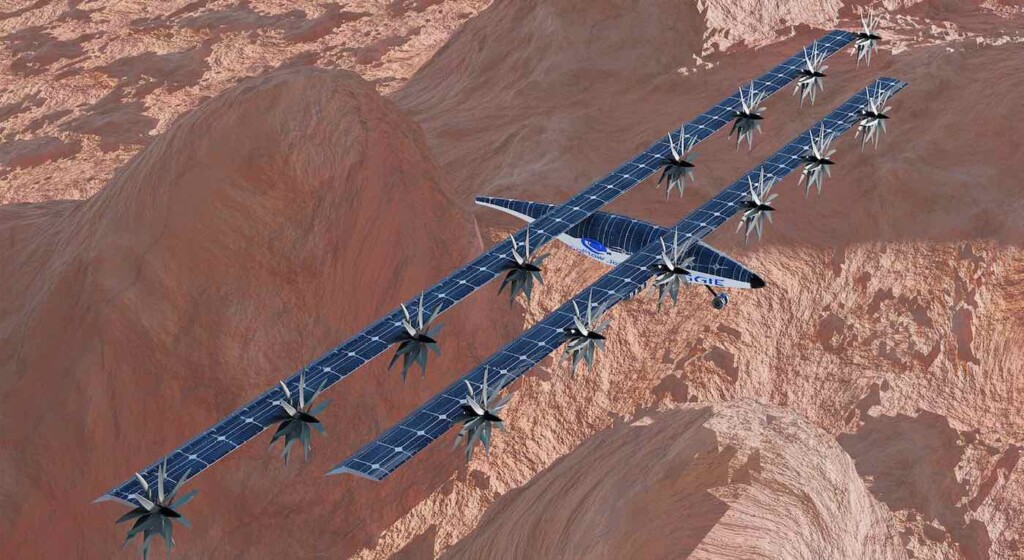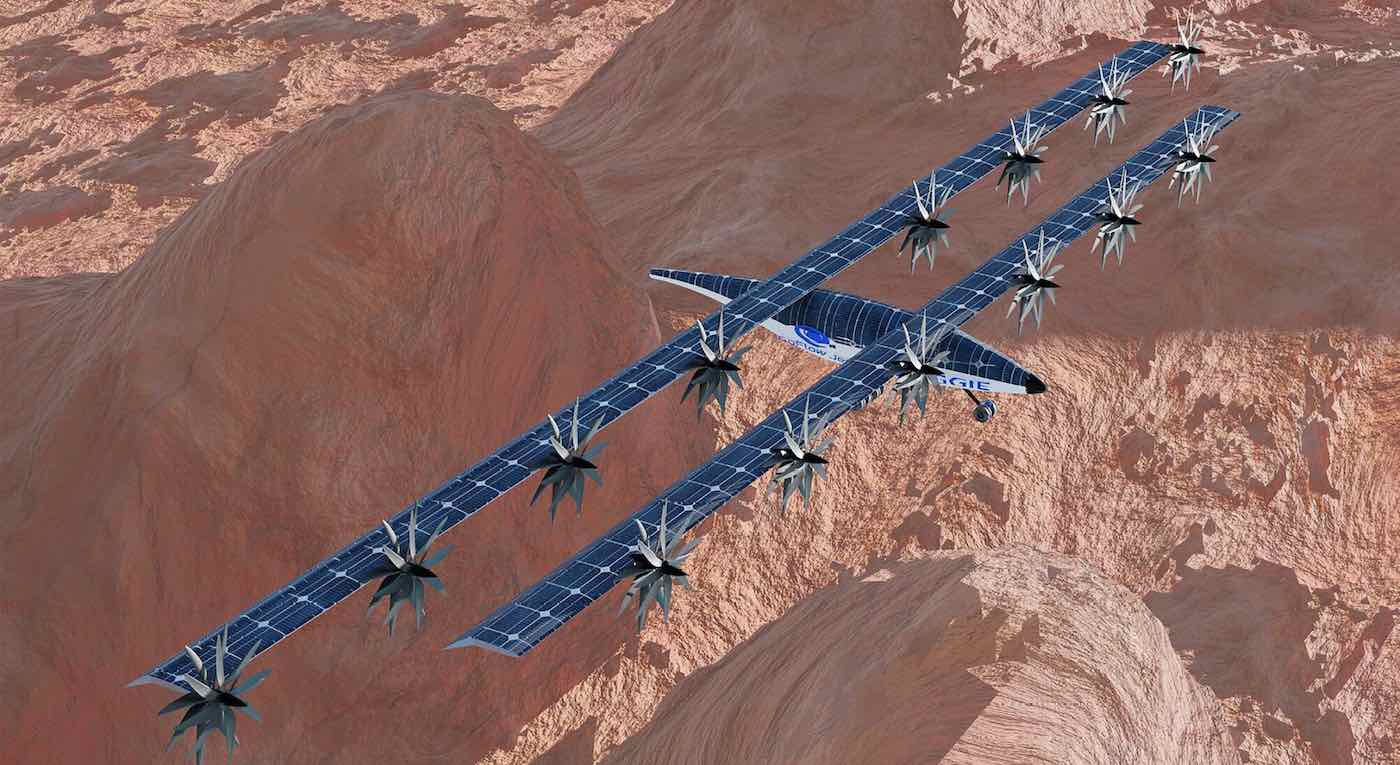
A bold design for an vertical take-off aeroplane has received advanced grant funding from NASA with the aim of having it ready to fly on Mars in the next 6 years.
MAGGIE (Mars Aerial and Ground Global Intelligent Explorer) is a compact fixed-wing electric aircraft powered by solar energy to fly in the Martian atmosphere—picture the wings of the Wright Flyer but made of solar panels.
The aircraft will have vertical take-off/landing capability and will be able to travel over 100 miles per hour at an altitude of 3,300 feet.
Already funded, MAGGIE is going to benefit immensely from flight data gathered by the little Ingenuity Mars Helicopter, a small helo-drone that was brought to Mars onboard Perseverance, the latest rover NASA landed on the planet.
Ingenuity conducted over 30 flights in Martian airspace, gathering critical data on wind resistance, air speed, and other avionic metrics crucial for building aircraft that will fly on Mars.
The Martian atmosphere is 160x thinner than Earth’s, so MAGGIE has a cruise lift coefficient nearly an order of magnitude higher than conventional subsonic aircraft to overcome the low density.
“The representative mission for MAGGIE presented would… include a study of the origin and timing of the Martian core dynamo from the weak magnetic fields found in the large impact basins, a regional investigation of the source of methane signals detected by the Tunable Laser Spectrometer on the Mars Science Laboratory in Gale crater, and mapping of subsurface water ice at high resolution in the mid-latitudes where it has been observed from orbit,” explained Ge-Cheng Zha of the Florida-based developers Coflow Jet, LLC.
Funded by a NASA grant program called NIAC, or NASA Innovative Advanced Concepts, MAGGIE is in early stages of development but it could revolutionize the ability to explore almost the entirety of the Martian surface.
CURRENT MARTIAN UNDERSTANDING: NASA Summarizes What New Mars Rover has Found as it Finishes it’s Mission at Just Over 1,000 Days
NIAC has funded a variety of daring enterprises, including asteroid mining technologies and fungal house kits for Martian habitation.
“The daring missions NASA undertakes for the benefit of humanity all begin as just an idea, and NIAC is responsible for inspiring many of those ideas,” said NASA Associate Administrator, Jim Free.
OTHER MARS NEWS: Mars Rover Discovers Liquid Salt Water on the Red Planet For the First Time
“The Ingenuity helicopter flying on Mars and instruments on the MarCO deep space CubeSats can trace their lineage back to NIAC, proving there is a path from creative idea to mission success. And, while not all these concepts will fly, NASA and our partners worldwide can learn from fresh approaches and may eventually use technologies advanced by NIAC.”
SHARE This Wild Idea For Flying On Mars With Your Friends…




















